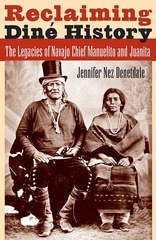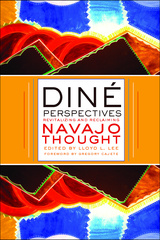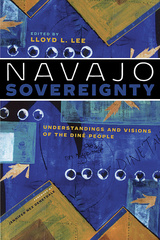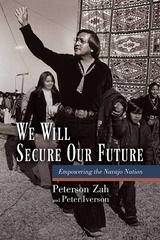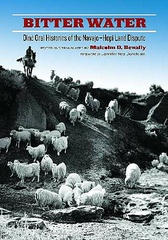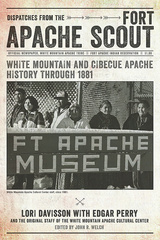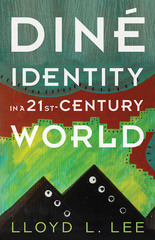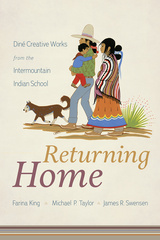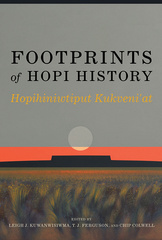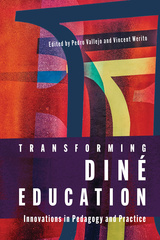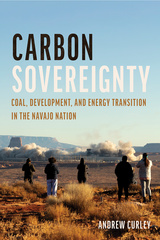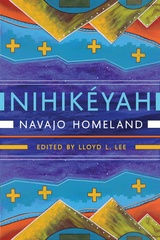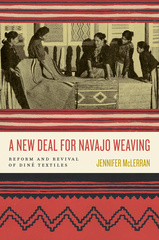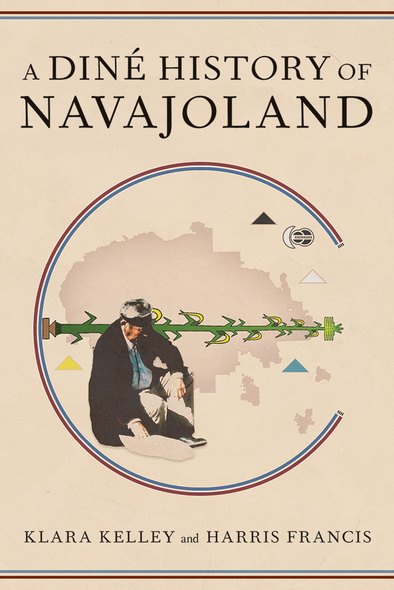
344 pages, 6 x 9
46 b&w illustrations, 3 maps, 1 table
Paperback
Release Date:22 Oct 2019
ISBN:9780816538744
For the first time, a sweeping history of the Diné that is foregrounded in oral tradition. Authors Klara Kelley and Harris Francis share Diné history from pre-Columbian time to the present, using ethnographic interviews in which Navajo people reveal their oral histories on key events such as Athabaskan migrations, trading and trails, Diné clans, the Long Walk of 1864, and the struggle to keep their culture alive under colonizers who brought the railroad, coal mining, trading posts, and, finally, climate change.
The early chapters, based on ceremonial origin stories, tell about Diné forebears. Next come the histories of Diné clans from late pre-Columbian to early post-Columbian times, and the coming together of the Diné as a sovereign people. Later chapters are based on histories of families, individuals, and communities, and tell how the Diné have struggled to keep their bond with the land under settler encroachment, relocation, loss of land-based self-sufficiency through the trading-post system, energy resource extraction, and climate change.
Archaeological and documentary information supplements the oral histories, providing a comprehensive investigation of Navajo history and offering new insights into their twentieth-century relationships with Hispanic and Anglo settlers.
For Diné readers, the book offers empowering histories and stories of Diné cultural sovereignty. “In short,” the authors say, “it may help you to know how you came to be where—and who—you are.”
The early chapters, based on ceremonial origin stories, tell about Diné forebears. Next come the histories of Diné clans from late pre-Columbian to early post-Columbian times, and the coming together of the Diné as a sovereign people. Later chapters are based on histories of families, individuals, and communities, and tell how the Diné have struggled to keep their bond with the land under settler encroachment, relocation, loss of land-based self-sufficiency through the trading-post system, energy resource extraction, and climate change.
Archaeological and documentary information supplements the oral histories, providing a comprehensive investigation of Navajo history and offering new insights into their twentieth-century relationships with Hispanic and Anglo settlers.
For Diné readers, the book offers empowering histories and stories of Diné cultural sovereignty. “In short,” the authors say, “it may help you to know how you came to be where—and who—you are.”
The authors successfully demonstrate that traditional oral history is living history—empowering—and rather than based on untrue narratives, such as myths, oral history seeks harmony. Authors of Native American history and culture should always consult and include oral history among written historical sources. ... Kelley and Francis make it abundantly clear that the Navajo are not helpless victims and for many centuries have resisted and survived numerous policies and actions designed to destroy their ways of life. Navajo political and cultural sovereignty is self-determination in its truest sense and rejects federal Indian sovereignty laws.'—Raymond Wilson, American Indian Culture and Research Journal
‘…the text provokes discussions of ceremonial histories, clan origins, and family oral histories. While this book is not a replacement for the histories learned through ceremonial settings, while shearing, during planting and hunting seasons, or as part of our cultural arts practices, it is a worthy companion.’—Christine M. Ami (Navajo), Tribal College Journal
'This book proves that it is time for researchers to stop dis-missing Indigenous oral traditions as an unreliable source on any subject of study. Officials of the Navajo Nation also must understand that use of Diné oral traditions in governance, interpretation of laws, and problem-solving is consistent with 'doing sovereignty' the Diné way. A sovereign American Indian nation should own and control its history, identity, culture, language, spirituality, and political existence.'—Raymond D. Austin, Native American and Indigenous Studies
‘A Diné History of Navajoland brings much-needed attention to Navajo perspectives on the past and present. Drawing on oral history and ethnographic interviews, this book provides a comprehensive investigation of Navajo history and offers new insights into their twentieth-century relationships with Hispanic and Anglo settlers.’—Lindsay M. Montgomery, School of Anthropology, University of Arizona
‘This book offers empowering histories and stories of Diné cultural sovereignty. This book is a must-read for readers interested in Navajo history, land, oral tradition, and cultural sovereignty.’—Lloyd L. Lee, editor of Navajo Sovereignty: Understandings and Visions of the Diné People
Klara Kelley has taught anthropology and economics at Navajo Community College (now Diné College), then worked for the Navajo Nation Archaeology and Historic Preservation Departments. In 1993 she and co-author Harris Francis began their present work as independent consultants in historic and cultural preservation in Navajoland.
Harris Francis is Diné from Teesto, Arizona, and an army veteran. After employment in various Navajo Nation government programs, including Archaeology and Historic Preservation, he and Klara Kelley linked as independent consultants. Francis’s family is rooted in land partitioned to the Hopi Tribe in 1974. Francis and Kelley’s main goal is keeping Diné culture alive and strong.
Harris Francis is Diné from Teesto, Arizona, and an army veteran. After employment in various Navajo Nation government programs, including Archaeology and Historic Preservation, he and Klara Kelley linked as independent consultants. Francis’s family is rooted in land partitioned to the Hopi Tribe in 1974. Francis and Kelley’s main goal is keeping Diné culture alive and strong.
Introduction: The Diné, the Land, Oral History, and Sovereignty
1. An Argument with Archaeologists
2. Abalone Shell Buffalo People and Ancient Trails
3. Traditional Diné Maps: History as Geography
4. Diné-Anaasází Relations, Clans, and Ethnogenesis
5. Western Diné Frontline Landscapes Before the Long Walk
6. The People Meet “Americans” on the Arizona Railroad Frontier
7. Indian Giving on the Railroad Frontier
8. Diné Traders Before the 1950s
9. Diné Trading and Silversmithing at Borrego Pass Trading Post
10. Diné Workers in Underground Coal Mines Around Gallup
11. Diné Land Use and Climate Change
Afterword
Notes
Bibliography
Index




